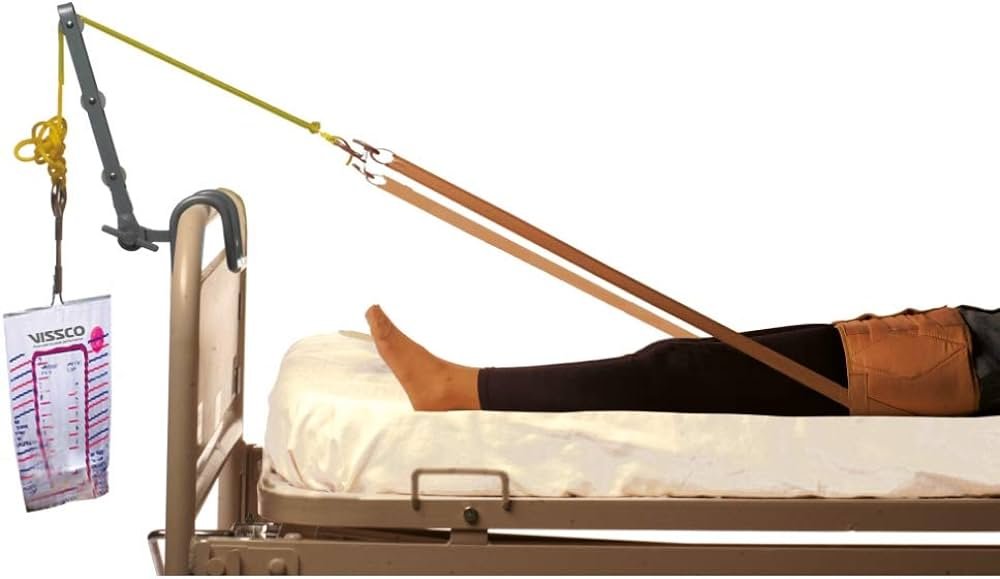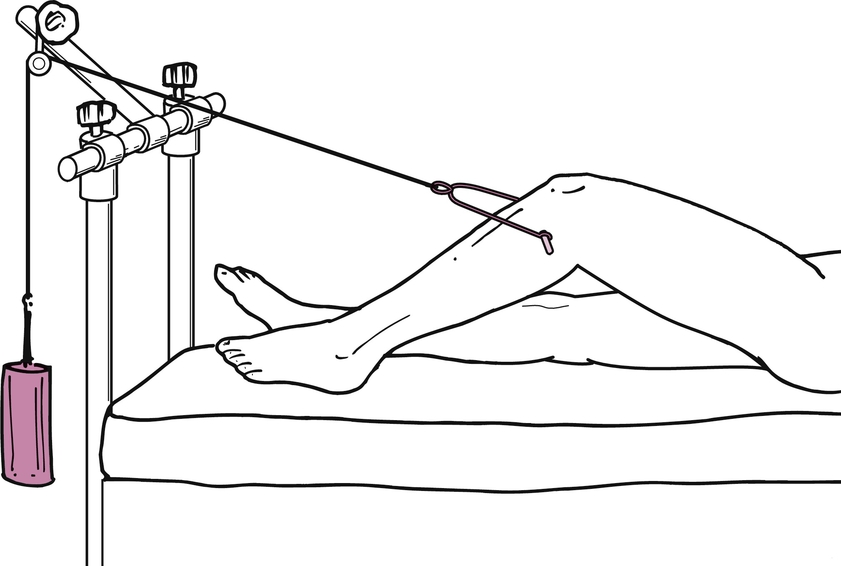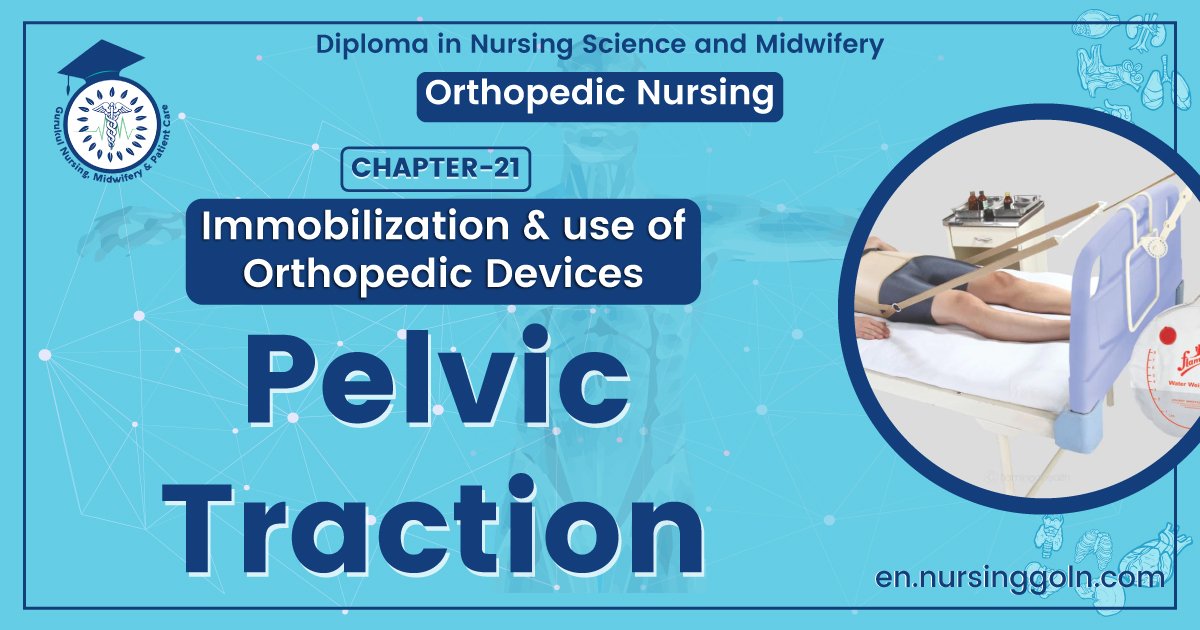Pelvic Traction – An orthopedic nurse is a nurse who specializes in treating patients with bone, limb, or musculoskeletal disorders. Nonetheless, because orthopedics and trauma typically follow one another, head injuries and infected wounds are frequently treated by orthopedic nurses.
Ensuring that patients receive the proper pre-and post-operative care following surgery is the responsibility of an orthopedic nurse. They play a critical role in the effort to return patients to baseline before admission. Early detection of complications following surgery, including sepsis, compartment syndrome, and site infections, falls under the purview of orthopedic nurses.
Pelvic Traction
Purposes of pelvic tractions:
1) To relieve muscle spasms of the lower back.
2) To reduce pressure on the spinal nerve roots.
3) To treat minor fracture of the lower spine.
4) To immobilize the patients.
(Ref-Lippincott, Adult Orthopedic Nursing, I edition, P-190)
Indications of pelvic tractions:
1) Conservative management of pelvic fracture.
2) Conservative management of low backache.
Procedure of pelvic tractions:
1) Before applying traction, explain the benefits of traction and what you are going to do and patient’s role in maintaining the effectiveness of the treatment
2) Measures the patients hip at the pelvis to obtain the correct size of pelvic belt.
3) Have the patient lie flat in bed in correct alignment.
4) Help the patients log roll or turn the patients like you would like a log by keeping their trunk and legs straight to one side.
5) With the patients facing away, fold the lower portion of the belt and tuck it under the patients lower hip, as is done when changing the bottom sheet of occupied bed.

6) Secure the pelvic belt across the patient’s lower abdomen.
7) Make sure that it is on the pelvis and it does not go above the iliac crest or umbilicus.
8) Do not pull the pelvic belt so tight that it interferes with the comfort.
9) With the patients supine put the bed in contour or Williams positions(15-20 degree of foot elevation and 30-45 degree elevation of the head of the bed.
10) The strapes from the belt should be attached to the spreader bar and a rope from the center of the spreader bar should be threaded through the pulley and tight to the weight carrier.
11) Apply the correct amount of weight to the carrier.
(Ref-Lippincott, Adult Orthopedic Nursing, I edition, P-190)
Nursing management of pelvic tractions:
A) Assessment:
1) Determine the correct pulling in both sides
2) Check the weight in correct regarding the patients need.
3) Check the weight is hang freely.
4) Observe the patients is correct alignment and verify that the patients is in
5) Williams 4)or contour positions.
6) Note any tightness of the pelvic belt over the pelvis or bladder area.
7) Note any pain or discomfort over any bony prominences.
B) Nursing diagnosis:
1) Pain and discomfort related to soft tissue trauma in the low back.
2) Impaired physical mobility related to muscle spasms in the low back.
3) Impaired skin integrity related to immobility and traction.
4) Anxiety related to knowledge of care and treatment methods.
C) Nursing interventions:
1) Alleviation of pain:
a) Correct the positioning of hip to reduce pain and discomfort.
b) Correct position in bed helps to relax sciatic nerve and relieve sciatic nerve pain.
c) Give analgesics to reduce pain according to doctors order.

2) Increase mobility:
a) Keep the patients in supine positions.
b) The patients is not allowed to turn or to lie on their side or abdomen.
c) Encourage to patients about back exercise.
- Pelvic tilt: Lying supine, tightness the stomach muscles, and then rocks the pelvis, flattening the low back.
- Knee-chest: Lying supine with the abdominal muscles tightened, patients raise their head and shoulders and bring one knee up towards the nose, holding the position for a count of 5.
- Straight leg raise: The patients lies supine with one knee bent and held to their chest with their hands. Patients then lift the other legs, keeping the knee straight and the ankle flexed.
3) Maintaining skin integrity:
a) Observe the bony prominence
b) Give back massage to improve circulation of the area.
c) Give pad under the pressure points.
d) Give alcohol rubs to prevent skin breakdown.

4) Improving knowledge about care:
a) The patients must be instruct to keep the back straight, and use the leg muscles, not back muscle, when picking up something from the floor or lifting the heavy objects.
b) When standing for any period of time, he/she should use a small stool or other means to elevate one foot in order to take stress off the back.
c) The best and easier position for sleeping is to lie in one side with knees and hips slightly flexed.
d) Persons with back pain should not sleep in prone positions.
e) If the patients sleeps supine, the knees need to be elevated.
f) While sitting in bed the patients must keep their knees higher than their hips.
(Ref-Lippincott, Adult Orthopedic Nursing, I edition, P-192)
Read more:
